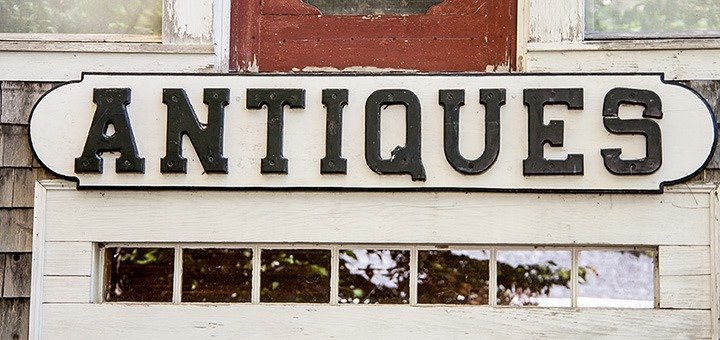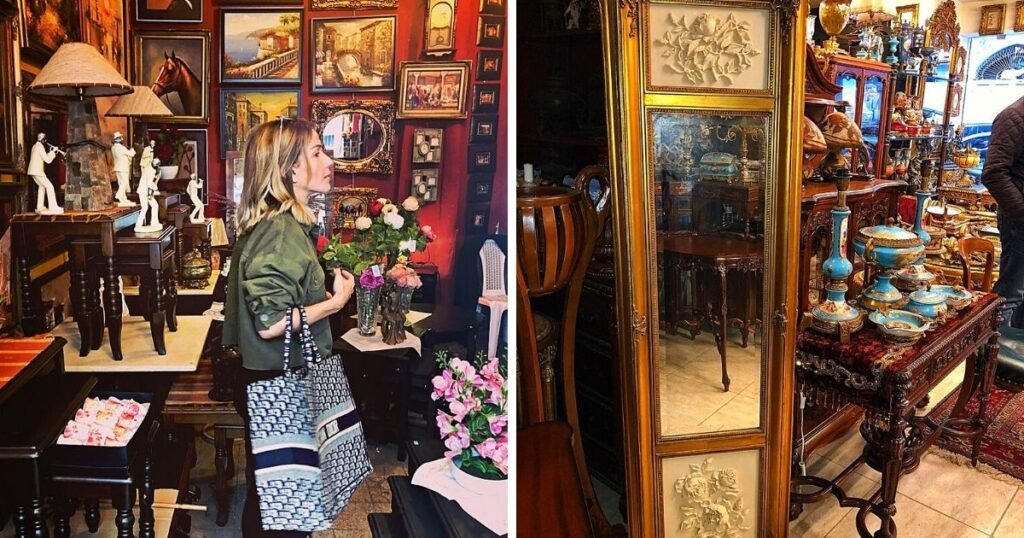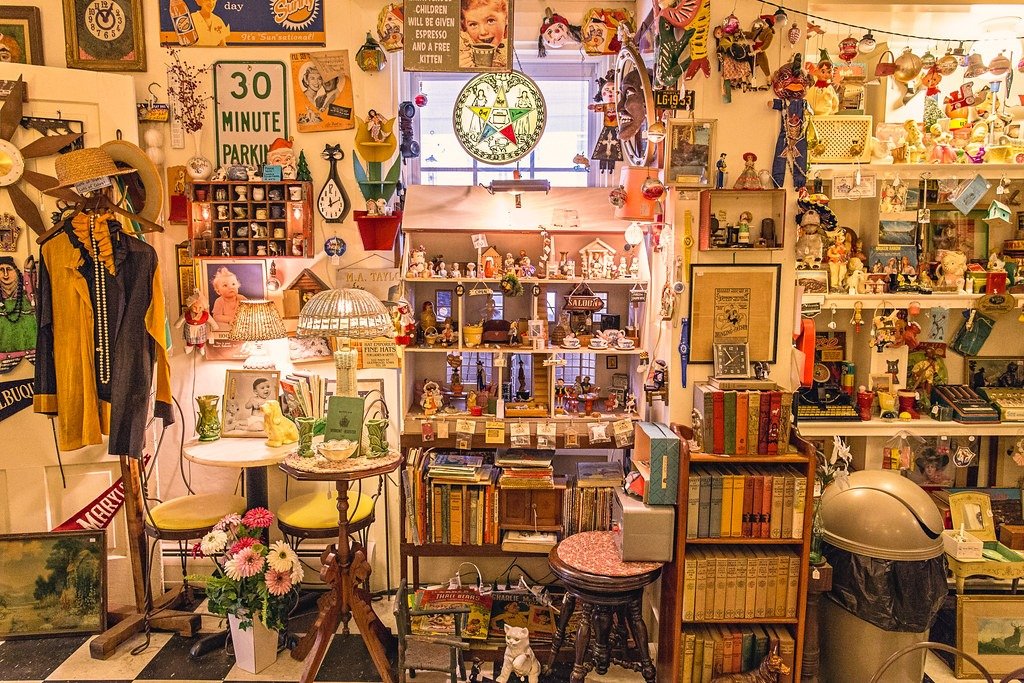Inroduction
Antique stores hold a unique allure that transcends mere shopping. They are portals to the past, each item whispering stories of bygone eras and showcasing the artistry of previous generations. Whether you’re an avid collector, a history enthusiast, or someone simply in search of a unique piece for your home, antique stores offer a treasure trove of items that capture the essence of history and craftsmanship. This article delves into the fascinating world of antique stores, exploring their history, the art of antique hunting, and the cultural significance of antiques.

The History and Evolution of Antique Stores
Antique stores have a rich history that mirrors the evolution of society and commerce. The concept of antiques dates back centuries when objects began to be valued for their age and rarity. In the 19th century, as the concept of historical preservation gained momentum, the antique market started to formalize. Antique stores began to emerge as specialized shops, catering to collectors and enthusiasts who sought items with historical significance.
In the early days, antique shops were often small, family-run businesses. They were frequented by those with a deep appreciation for history and craftsmanship. As the 20th century progressed, the antique market grew, and so did the variety of items available. The rise of mass production and the changing tastes of the public led to a greater demand for unique, handcrafted, and vintage items.
The Art of Antique Hunting
Antique hunting is both an art and a science. It involves a keen eye, patience, and a deep understanding of the items you’re seeking. Here’s a guide to making the most of your antique shopping experience:
Research and Knowledge:
Before embarking on your antique hunt, it’s crucial to educate yourself about the types of antiques you’re interested in. Understanding the history, styles, and periods associated with specific items can help you identify genuine pieces and avoid forgeries. Books, online resources, and museum exhibitions can provide valuable insights.
Condition and Authenticity:
When evaluating antiques, pay close attention to their condition. Wear and tear can affect value, but it’s also essential to consider how an item has been repaired or restored. Authenticity is another crucial factor. Look for maker’s marks, stamps, or signatures that can help verify an item’s provenance.
Negotiation Skills:
Antique stores often offer room for negotiation. Don’t be afraid to engage in polite bargaining. A fair deal can often be reached through respectful dialogue. Remember that antique dealers value informed buyers who appreciate the history and craftsmanship behind their items.
Diverse Selection:
Antique stores can vary widely in their inventory. Some specialize in specific types of antiques, such as furniture, jewelry, or artwork, while others offer a broad range of items. Visiting a variety of stores can help you find unique pieces and better understand market trends.
The Types of Antiques You’ll Find
Antique stores are treasure troves of diverse and fascinating items. Here’s a look at some of the most common categories of antiques you might encounter:

Furniture:
Antique furniture is often prized for its craftsmanship and quality. From Victorian settees to mid-century modern chairs, antique furniture pieces can add character and charm to any space. Look for pieces with intricate carvings, unique materials, and historical significance.
Jewelry:
Antique jewelry ranges from elaborate Victorian pieces to Art Deco designs. These items often feature exquisite craftsmanship and unique gemstones. When shopping for antique jewelry, consider the design, setting, and provenance to ensure you’re getting a genuine and valuable piece.
Artwork:
Antique artwork includes paintings, prints, and sculptures from various periods. Collectors often seek out works by well-known artists or those with historical significance. The condition of the artwork, as well as its provenance, plays a significant role in determining its value.
Ceramics and Glassware:
Antique ceramics and glassware, such as fine china, crystal, and porcelain, are sought after for their beauty and craftsmanship. Collectors look for pieces from renowned makers or with unique patterns and designs. Pay attention to any marks or stamps that indicate the maker and period.
Textiles:
Antique textiles, including quilts, tapestries, and clothing, offer a glimpse into historical fashion and design. These items can be highly collectible, especially if they feature rare fabrics, intricate embroidery, or historical significance.
The Cultural Significance of Antiques
Antiques are more than just old objects; they are artifacts that offer insights into past cultures and societies. Each piece carries its own story, reflecting the values, tastes, and technological advancements of its time.
Historical Context:
Antiques provide a tangible connection to history. They offer clues about daily life, technological progress, and social norms from different periods. For instance, a Victorian-era sewing machine can shed light on the domestic lives of people from that era.
Craftsmanship and Artistry:
Many antiques are celebrated for their craftsmanship and artistry. The techniques used in creating these items often reflect the skills and aesthetics of the time. Antique furniture, for example, can showcase intricate woodwork that exemplifies the artistry of past craftsmen.
Preservation of Heritage:
Collecting and preserving antiques helps maintain cultural heritage. By valuing and caring for these items, we ensure that future generations can appreciate and learn from the past. Museums, private collectors, and antique stores all play a role in this preservation.
Caring for Your Antiques
Proper care and maintenance are crucial to preserving the value and integrity of antiques. Here are some tips for ensuring your antiques remain in good condition:
Storage:
Store antiques in a controlled environment to protect them from extremes of temperature and humidity. Avoid placing items in direct sunlight or near sources of heat, which can cause damage.
Cleaning:
Cleaning antiques requires a gentle touch. Use soft, lint-free cloths and appropriate cleaning products for the material. Avoid harsh chemicals or abrasive tools that could damage the item.
Restoration:
If restoration is needed, consult a professional who specializes in antique restoration. Attempting to repair antiques yourself can lead to unintended damage. A professional can ensure that any repairs are done in a way that maintains the item’s value and historical accuracy.
Insurance:
Consider insuring valuable antiques to protect them against loss or damage. Antique insurance can provide peace of mind and financial protection in case of unforeseen events.
The Future of Antique Stores
As technology and consumer habits evolve, antique stores face both challenges and opportunities. Online marketplaces and auctions have made antiques more accessible to a global audience. However, the personal touch of visiting a physical antique store remains irreplaceable.

Digital Transformation:
Many antique stores are embracing digital platforms to reach a broader audience. Online stores and virtual tours allow collectors to explore and purchase antiques from anywhere in the world. This digital presence helps antique stores adapt to changing consumer preferences and expand their reach.
Sustainability:
The growing awareness of sustainability and the desire for unique, handcrafted items are contributing to a renewed interest in antiques. Consumers are increasingly drawn to the idea of repurposing and valuing items with a history, rather than opting for mass-produced goods.
Community and Experience:
Antique stores often serve as community hubs, where enthusiasts gather to share their passion and knowledge. Hosting events, workshops, and exhibitions can enhance the store’s role as a cultural and educational space.
Tips for First-Time Antique Shoppers
If you’re new to the world of antiques, here are some tips to make your shopping experience enjoyable and successful:
Start Small:
Begin with items that are affordable and manageable. Small collectibles or decorative pieces can be a great way to start your collection and gain an appreciation for antiques.
Ask Questions:
Don’t hesitate to ask store owners or dealers for information about the items you’re interested in. They can provide valuable insights and help you make informed decisions.
Set a Budget:
Determine your budget before you start shopping. Antiques can vary widely in price, so having a budget in mind will help you stay focused and avoid overspending.
Enjoy the Journey:
Antique shopping is as much about the experience as it is about finding specific items. Take your time exploring different stores, learning about the history of various pieces, and enjoying the hunt.

